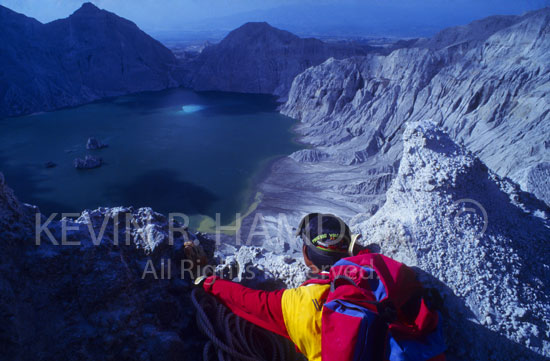Life through a lens
An Interview with Robert Houston, founder and former Editor of ACTION ASIA Magazine, Hong Kong.
Introduction
Kevin Hamdorf, originally from Adelaide, South Australia, graduated with a B.Sc. (Hons) in Geology and Physical & Inorganic Chemistry from the University of Adelaide and studied documentary photography at California's San Francisco Academy of Art, a combination of professions which provide him a uniquely accentuated vision into the structural forces that sculpture some of nature's most dramatic landscapes and the communities that inhabit them. After working in Australia and America, he eventually moved to the Philippines in 1987. where he and his family now live.
His images of the land and life in the Philippines succeed, as few others do, in capturing the vibrant color and energy of this beautiful, unpredictable archipelago. Kevin was a member of the first expedition to climb the volcanic crater of Mount Pinatubo since the eruption and his images from this adventure and subsequent work related to that cataclysmic event are discussed below. Kevin has contributed to many other publications, including Reader’s Digest, Discovery, Sawasdee, Silver Kris, Morning Calm, Mabuhay, Asia Inc. American Way, The New York Times, Stars & Stripes.
Q: What attracts you to photographing the Philippines?
A: I think it's the "Wild West" quality of the place. The Philippines is amazing. You get this sense that anything can happen - and it often does. It's a big free-for-all, really. It's also a country that's very much alive. There are exploding volcanoes, teeming coral reefs, devastating typhoons, earthquakes, and a great diversity of ethnic groups. The result is just many, many dramatic possibilities for photography.
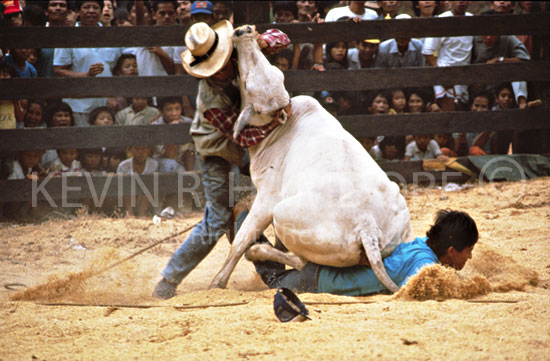
“Bulldozed”. Malaybalay, Bukidnon.
A distinctive “tropical” variant of the cowboy culture thrives on the high, cool Bukidnon Plateau of Mindanao and is centered round the Del Monte Plantation, near the frontier town of Malaybalay. Providing thrills and spills, the rodeo is the highlight of the annual Malaybalay fiesta.
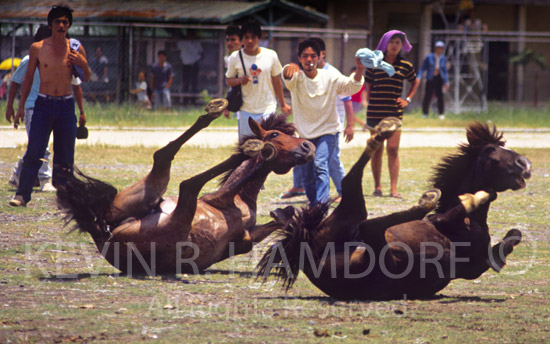
“Horse fight”. An enduring traditional sport among many of Mindanao’s ethnic tribes. Davao, Davao del Norte, Philippines
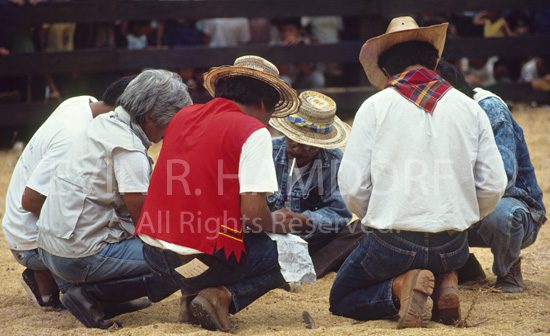
“Judge’s Circle”. Malaybalay Rodeo. Philippines
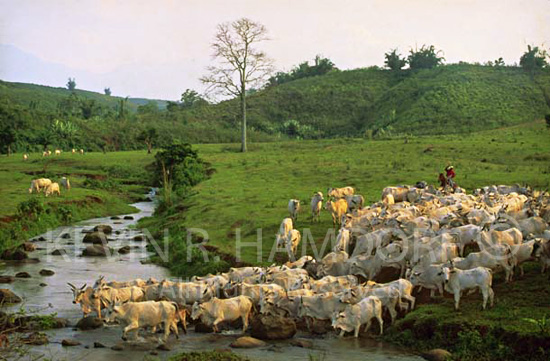
“Round up”. Del Monte Plantation, Bukidnon.Philippines
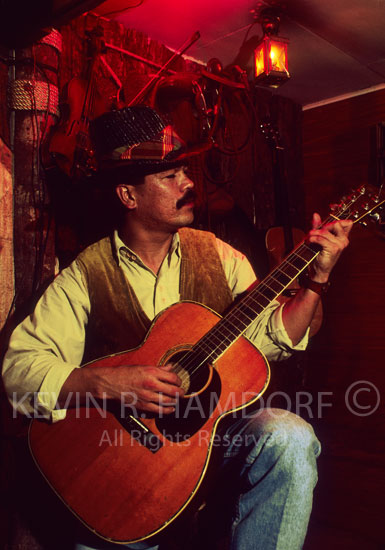
“Cowboy’s Melody”. Western Bar, Malaybalay. Philippines
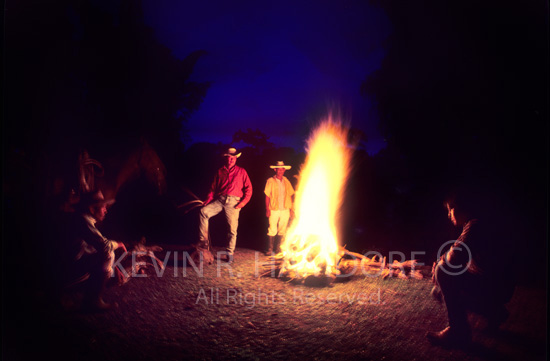
“Fireside comradary”. Del Monte Plantation. Philippines
Add to that the fact that the people here love to have their picture taken. Usually the problem is getting people out of the picture so that you can shoot what you want. For example, I once did a story on the MNLF guerrillas in Mindanao. They were all armed to the teeth with machine guns etc, but they were very friendly and delighted to let me photograph them.
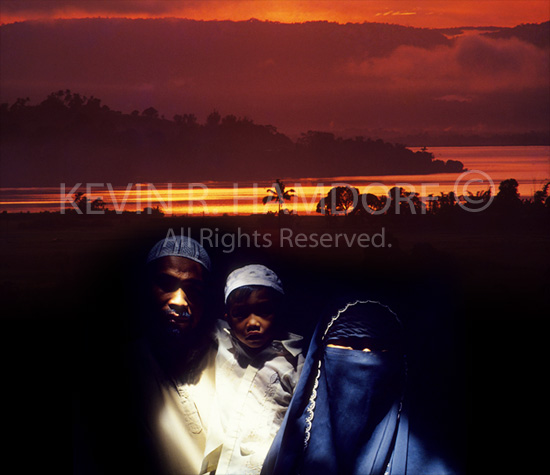
“Mysteryscape” (composite image). Lake Lanao is home to the Maranao people; their proud baring having been chiseled from tens of generations of Islamic tradition. Marawi City, Lanao Del Sur.
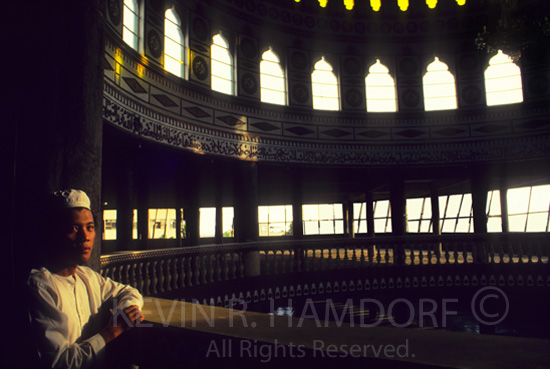
“Islamic Power”. Marawi City Mosque, place of divine worship and the community’s heart for perpetuating Allah’s message of truth.

“MNLF Solidarity”, A protector of the Maranao way of life that has flourished for centuries along the shores of Lake Lanao. Maguing, Lanao Del Sur.
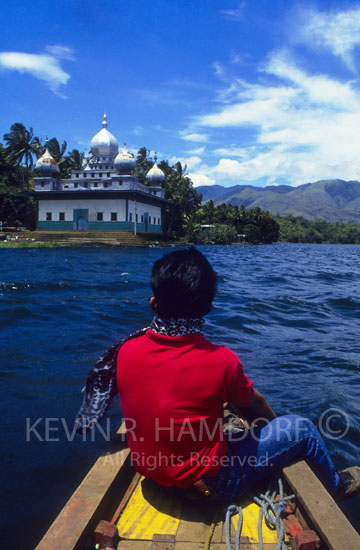
“Spiritual Fort”. Approaching the Bacolod-Grande Mosque on the western shore of Lake Lanao.
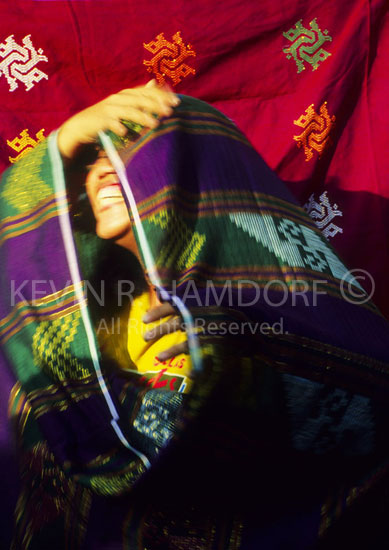
“Imposed Modesty”. The malong provides a convenient haven for a tentatively shy Maranao girl. Marawi City, Lanao Del Sur.
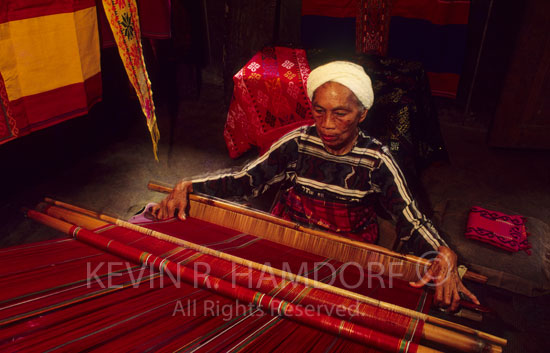
“Surviving Heritage”. Weaving the traditional malong, the ubiquitous multi-purpose garment, features colorful motifs definitive of the weaver’s place of origin. Marawi, Lanao Del Sur.
Q: Do you deliberately put yourself in demanding situations or extreme environments in order to take photographs?
A: If you could sum up my approach to photography, it would be the concept of always looking around the next corner, or walking over the next hill to see what's there. I think it's tremendously important to actively look for fresh images and viewpoints. This was an attitude I learned while studying photography at the San Francisco Academy of Art. The teachers were passionate about photography, and had a very "go get it" attitude. Once they even sent me down to the transients' district for an assignment - even though I could have had my throat cut! But they instilled in me the sense that until you push yourself to the edge, in every sense, you will not achieve anything meaningful in your work. That being said, one thing I've discovered is that the edge is actually a long way out there. Most of us are very conservative in the risks we take.
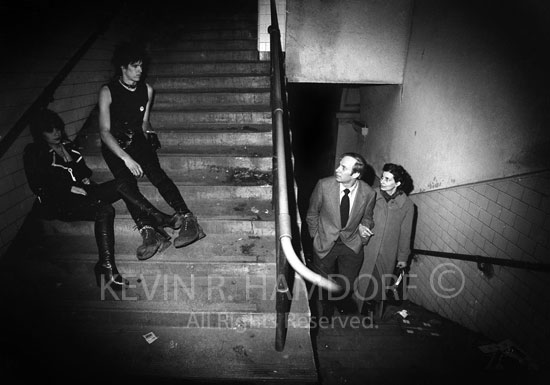
“Flash Encounter - Stockton Tunnel”. San Francisco, California, USA (1979). An extraordinary city extruding diversity - the photographer’s dream.
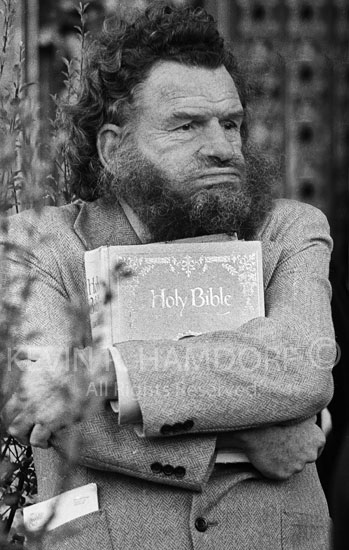
“Holy Comfort”. Union Square, San Francisco, USA. 1980
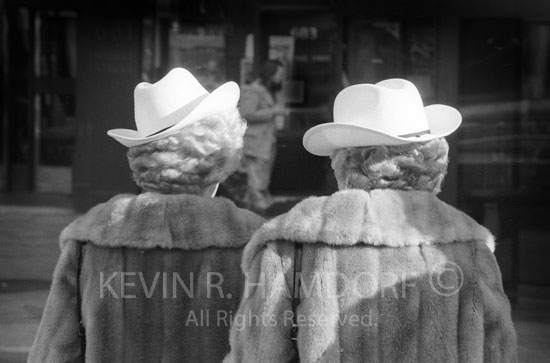
“Frisco’s Mystery Twins”. Sutter Street, San Francisco. 1981.
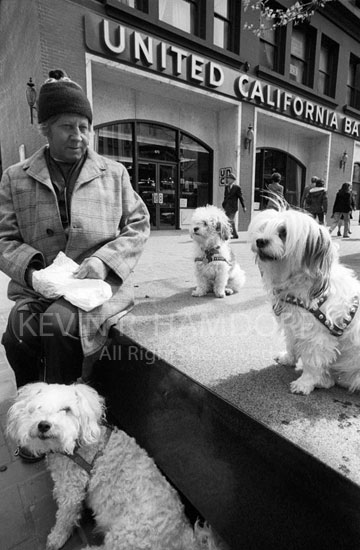
“Transient Friends”, Market Street (near 4th), San Francisco. 1979.
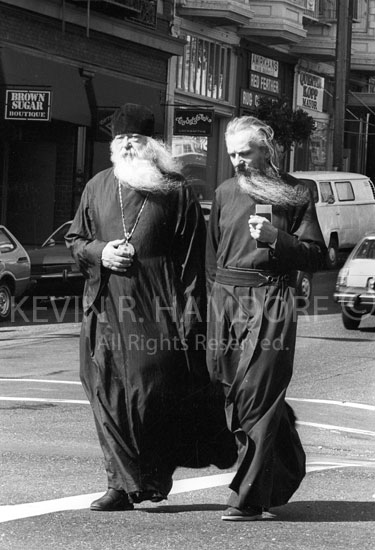
“Total Commitment”, Filmore & California Streets, San Francisco. 1982.
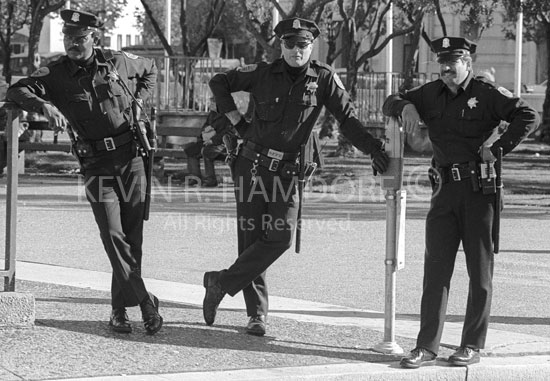
“Restrained Suspicion”, Civic Centre, San Francisco. 1978.
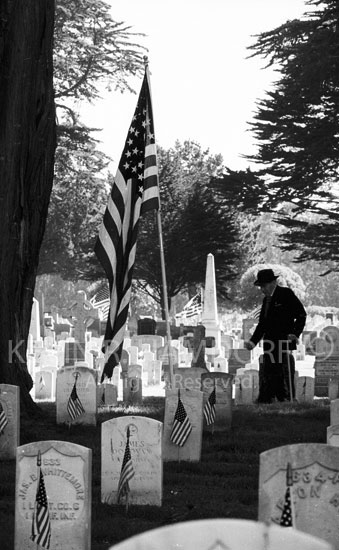
“Survivor”. Presdio Military Cemetery, San Francisco. 1977.
Q: Have any other photographers inspired or influenced your style?
A: One of the most important influences was working in a photo gallery while I was studying.
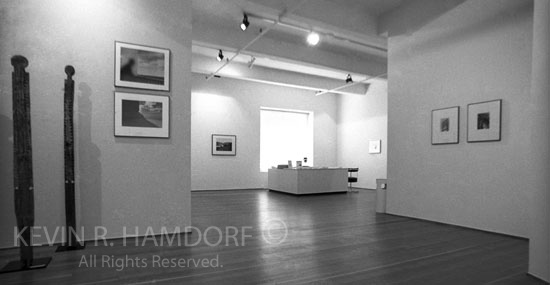
The Simon Lowinsky Gallery, 228 Grant Street, San Francisco, USA. (1981)
East African Reliquary Posts compliment masterfully presented photographs. Andre Kertez’s (1894 -1985), “Martinique, 1971”. Silver gelatin print (top) and Gail Skoff’s (1949 -) intriguingly parallel composition “Split Landscape, 1979”. Silver gelatin print, hand colored.
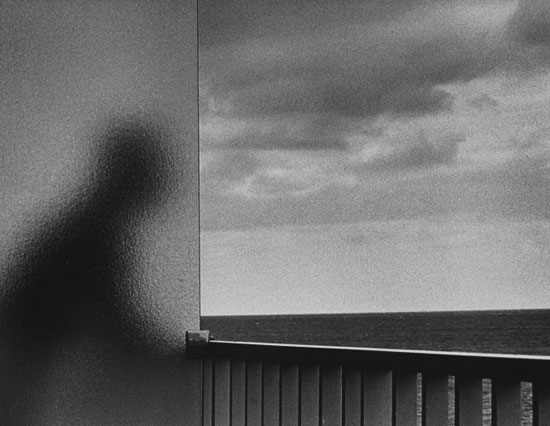
Andre Kertez’s (1894 -1985), “Martinique, 1971”. Silver gelatin print (personal collection)
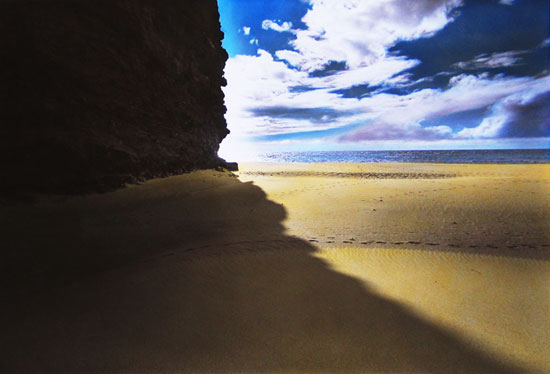
Gail Skoff’s (1949 -) “Split Landscape, 1979”. Silver gelatin print, hand colored (personal collection)
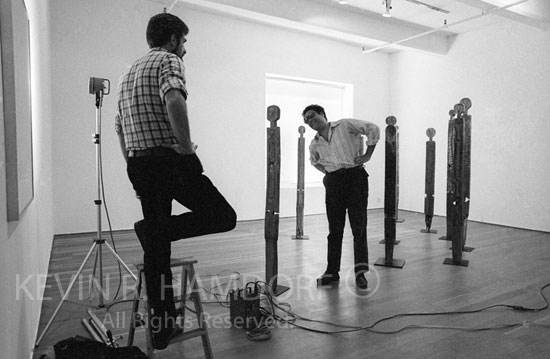
With an unconventional bent and an uncanny genius to winnow and then promote gifted artists (as well as the work of the established masters), Simon Lowinsky (right) was one of the first gallery owners to jointly exhibit and market photography as a worthy collectable. The gallery provided the opportunity to discover and appreciate, literally first hand, many of the great historical works in photography.
I was introduced to the work of some of the early masters, pioneers such as Carlton Watkins who photographed Yosemite in the 1870s. Every landscape was beautifully balanced, yet Watkins used a 20" x 24" glass plate camera to shoot them. I was inspired by his physical effort, by the fact that he was so passionate that he hauled glass plates up mountains. I'm sure he must have pre-visualized his images, since these cameras were not things you could casually sling over one shoulder then have a look around to see if there was anything interesting to point them at.
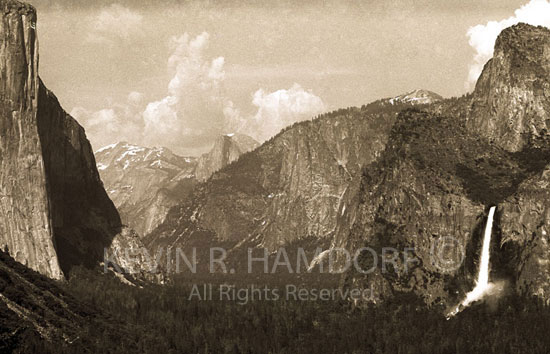
“The sweeping view of Yosemite Valley from the Mariposa Trail at Inspiration Point”. Landmarks visible are: El Capitan (left), Half Dome (centre) and Bridal Falls (right). A hundred years after Carlton Watkins’s visit, the breath-taking panorama of the Valley still defines visual inspiration. (Silver gelatin print, selenium toned, 1979)
Another aspect of these old photographs that appeals to me is the way they convey contemporary information about that period. I think photographs have an important documentary value, and I enjoy the opportunity my work gives me to record changes.
My background in geology has given me a fascination with time. To get a real feeling for time, you need to understand geological time. Geology is like a big clock. Photography is an extension of that. Things that appear solid and permanent to us, such as a mountain or a culture, are in reality changing. One day they will all disappear. Geology also gives you a great sense of the earth's power. You don't see these forces every day, but they are always there.
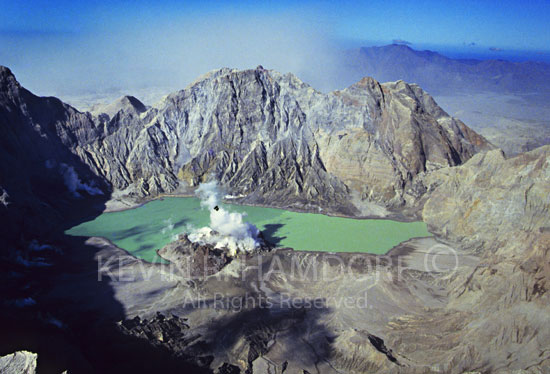 November 1992
November 1992
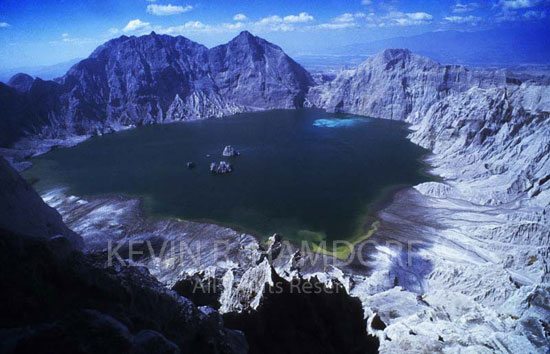 November 1994
November 1994
 December 2006
December 2006

“Mount Pinatubo Volcanic Crater, November 1992”. Note the newly developing central magma dome.

“Mt. Pinatubo Volcanic Crater, November 1994”. Accumulating seasonal rain waters gradually fill the crater, engulfing the magma dome, now visible as an island. White discolorations visible on the surface waters pinpoint toxic gas emissions escaping from the still smoldering vent below.

“Mt. Pinatubo Volcanic Crater, December 2006”. The crater lake, now filled to capacity and covering the central magma dome, overflows through the Maraunot Notch, the lowest point on the crater rim. Prolific vegetation cover has been re-established in less than 15 years, demonstrating the amazing resilience of nature.
Q: How does the documentary aspect of photography relate to your work in the Philippines?
A: This concept of documenting changes in landscapes and cultures is of great significance to the Philippines. The country is changing very fast, yet there is little of its heritage on photographic record. The first aspects of a culture to disappear are the most visual. Everywhere in the Philippines people now wear T-shirts. An Aeta tribesman inside his head is still Aeta to the core, but nowadays there's visually a lot less telling you that.
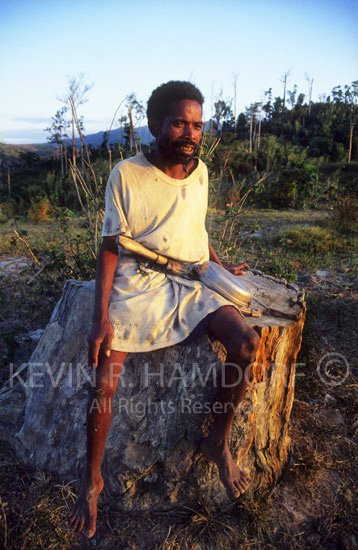
“Forlorn Future”. An Aeta tribesman with a handed-down T-shirt, discarded U.S. Military mess kit and prized bolo (knife), rests wearily on a severed, century old tree stump amid a deforested and desecrated landscape. Pamulaklakin Forest, Subic Bay Freeport Zone, Zambales.
The Aeta People are the original inhabitants of the Philippine Islands. Gentle and proud, they are slowly, but inevitably being driven from their ancestral forest lands by the unrelenting pressures of illegal deforestation and urban sprawl brought on by uncontrolled population growth.
My background in geology has given me a fascination with time. To get a real feeling for time, you need to understand geological time. Geology is like a big clock. Photography is an extension of that. Things that appear solid and permanent to us, such as a mountain or a culture, are in reality changing. One day they will all disappear. Geology also gives you a great sense of the earth's power. You don't see these forces every day, but they are always there.
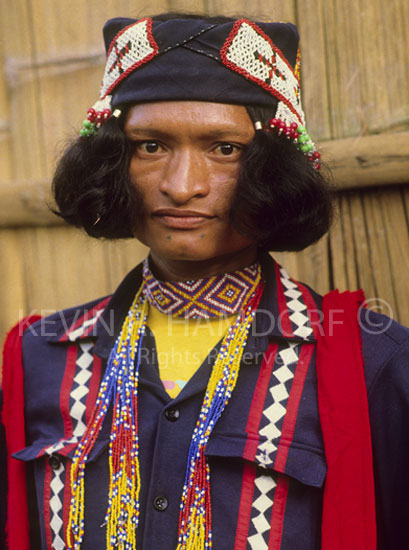
"Bukidnon Tribe", Malaybalay, Bukidnon
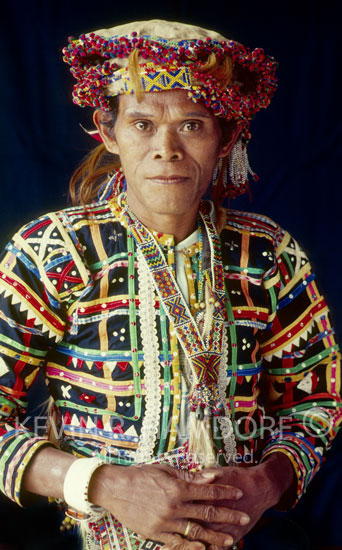
“Bagobo Tribe”. Davao Del Norte.
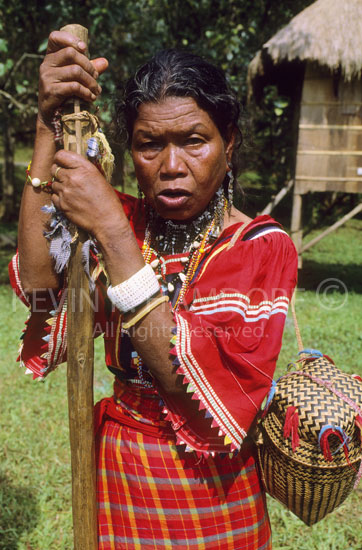
“Bukidnon Tribe” Malaybalay, Bukidnon.
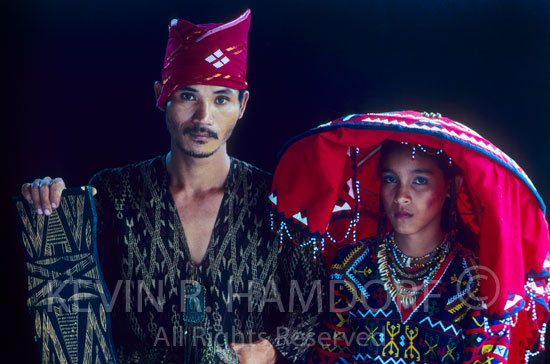
“T’boli couple”. Lake Sebu, South Cotabato.
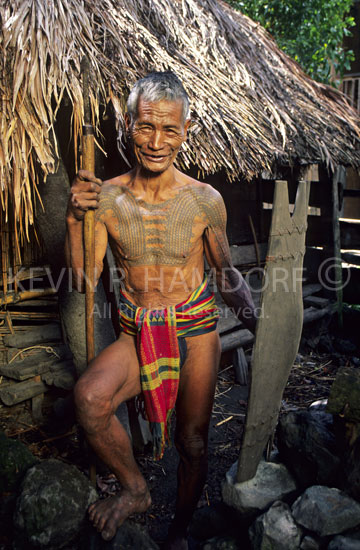
“Kalinga Elder”. Tinglayan, Kalinga.
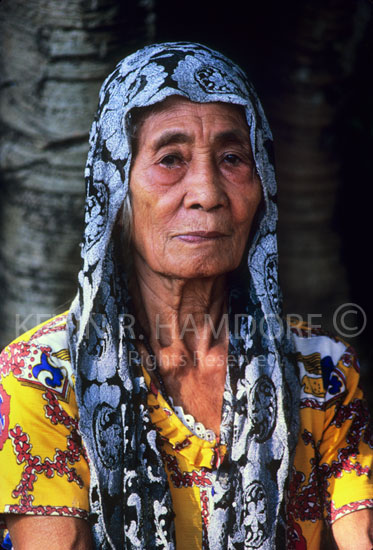
"Ivantan woman", Basco, Batan Island, Batanes
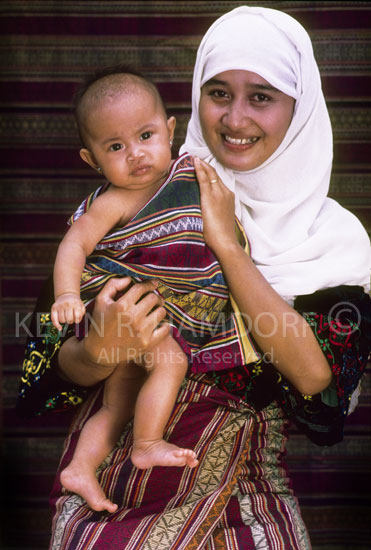
“Yakan Mother and child”. Basilan.
Surviving enclaves of traditionally attired tribal peoples are rare. However at fiesta times, entire ethnic communities meticulously dressed in their distinctive tribal garb, will majestically materialize. The transformation in personal composure brought about by a simple change from modern to tribal dress is stunning. For one or two days each year, the generally shy tribal people are possessed of a visible personal pride that is truly wondrous to behold.
The area where I live, Subic Bay (to the north of Manila), has changed enormously over the past few years. Apart from Pinatubo's eruption and the subsequent lahar [volcanic mud] flows, the town has undergone several other transformations.
Before the eruption, it was a rowdy bar area that catered to the US military. Then, overnight, the military left and it became a ghost town. Over the years it has gone through a revival and started to attract tourists. I'm very interested in documenting the changes that are taking place here. It may not be significant right now, but I'd like to think that in future the fact that I have recorded these changes might be of interest to someone else. For whatever reason, I'd like to think my photographs will have the same value as the images from those old masters had for me.
Q: What practical techniques do you use to capture a sense of wildness, to convey to the viewer a sense of being "out there"?
A: To create any kind of effective image, or to successfully communicate an idea through a photograph, you have to understand the chemistry of the film and the mechanics of the camera. The human eye sees many elements of an image that film cannot pick up, while film also records aspects of a scene that the eye will not register. It is the photographer's job to make up the difference. Night shots (such as time exposures) are an excellent example of this. They are one of my favorite types of shot. (I deliberately timed the Pinatubo trip for a full moon because I wanted to take night shots inside the crater.)
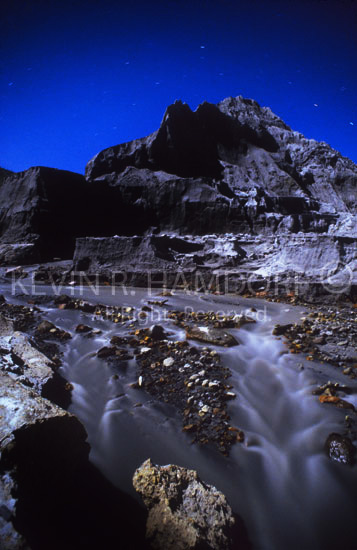
Water etched volcanic ash deposits, illuminated by the soft, diffuse light of a full moon.
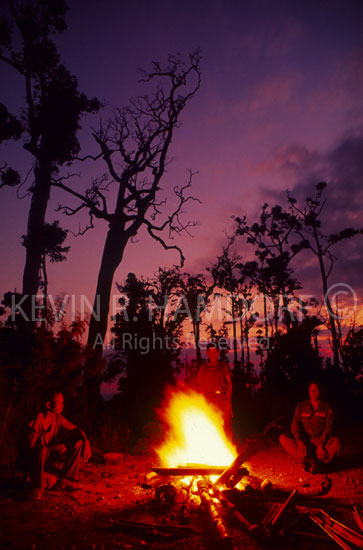
In 1964, Eking Bulatao an indigenous Aeta (right), assisted the US Military in establishing JEST (Jungle Environmental Survival Training) school to teach soldiers and airmen bound for the Vietnam War the skills of jungle survival.
On June 15th 1991, after lying dormant for over 500 years, Mt Pinatubo Volcano (15.13degrees N, 120.35 degrees E) cataclysmically erupted in what was the 20th Centaury’s second largest eruption and ejected more than one cubic mile of material. Volcanic ash blanketed the surrounding country, filling once deep valleys with deposits as much as 200 meters thick. Heavy monsoon and typhoon rains have subsequently knifed through these unconsolidated deposits, generating massively destructive lahar flows and leaving in its wake a fantastic, surreal luna-like landscape.
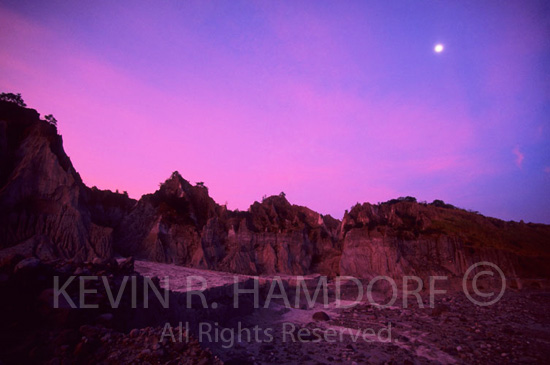
Full moon over Mt. Pinatubo volcanic Landscape, Maraunot River Valley, Zambales. Philippines
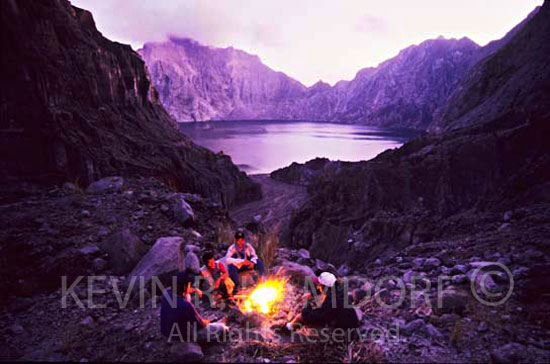
Campsite. Head waters of the O’Donnell River, Mt. Pinatubo Crater Lake, Pampanga. Philippines
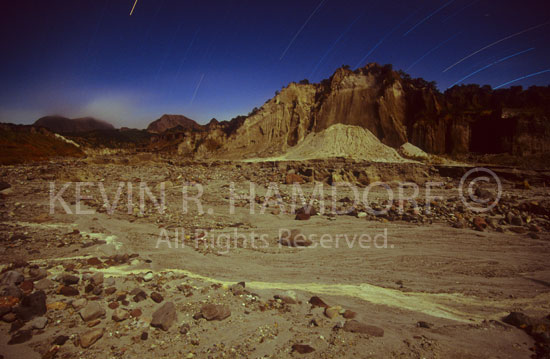
Water eroded volcanic ash landscape. Western flank, Mt. Pinatubo, Zambales.
I particularly like shots of people around a campfire because they tell a story. Many photographers ignore what happens when the sun goes down, even though nighttime activities are important elements in any overall story. Campfire shots are also an effective way of conveying a sense of being out in the wilds, away from civilization. Plus the end result, visually, is usually very atmospheric.
A shot I took of a group of Aetas from JEST - the Jungle Environmental Survival Training school in Subic Bay - sitting around a campfire illustrates well the techniques involved. I set up the shot so that the camera was facing west and the scene was backlit by the ambient light of the fading sky. It was about 20 minutes after sunset. To the naked eye, it was already dark. However, at this time of evening there's still a lot of light around that the human eye doesn't register.
Film has a capacity to slowly accumulate colors over time, so by setting a time exposure I was able to bring out rich colors in the sky. With this kind of shot, I always bracket my exposures. I shot a sequence of different exposures at 5secs, 10secs, 20secs, 30secs etc. In this case, the exposure I wanted was around 10secs. Another result of the long exposure was a slight blurring of the moving clouds, which intensified the atmospheric, primeval effect.
Amazingly, I didn't use any flash for this shot. To illuminate the Aetas, I simply had them sit behind the fire and let the natural light substitute for fill-in flash. (Without the campfire, they would have been silhouettes.) This had the added bonus of giving a warm glow to the image. To give the fire an extra kick, the moment before I pressed the shutter I threw in some dried leaves and bamboo that made it flare up. Of course, I needed the Aetas to co-operate since they had to sit very still while roasting in front of a fire. I sternly told them not to move. But these guys are amazingly tough: they would have sat in the fire if I had asked them to!
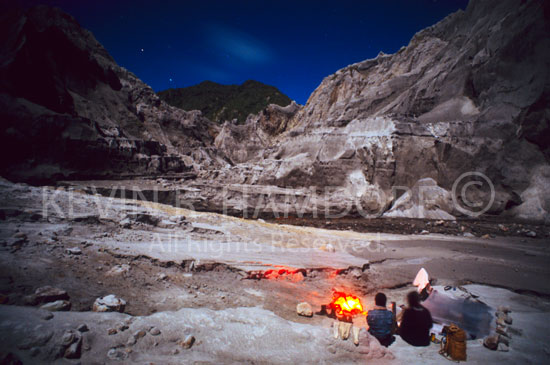
Campsite under the light of a full moon. Sacobia River Valley, Pampanga.
A purist might object to a shot being "posed" in this way, but once you become familiar with the limitations of film you realize that to achieve certain effects, manipulating aspects of the image is essential. The trick is to make it look natural, so that the viewer can't detect that the shot is posed. But although I achieved a natural effect with this campfire shot, I could never have done it without setting up the shot very carefully.
Q: What special technical challenges did the Mount Pinatubo trip present?
A: Color was the biggest. Although there was this fabulous landscape of lahar fields, the only colors were grey and blue. The whole landscape of Pinatubo was like a big 18 per cent grey card! I wanted to ensure that the hikers stood out from the landscape, so when I planned the expedition I asked them to bring bright clothing, preferably in primary colors.
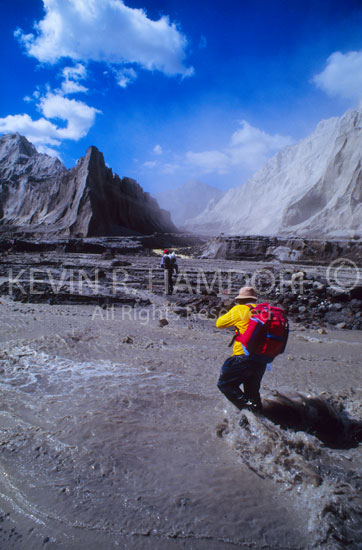
Crossing the Sacobia River lahar flow - onward to the eastern summit of the crater rim.
Most of them didn't - some even wore army camouflage - but one guy brought along a bright red and yellow jacket and red backpack that were ideal. There's one shot of him peering over the crater rim that appears in the Pinatubo article, and because of the colors it works particularly well. I also wanted this shot to put the reader "on the spot", to let the reader see and experience just what this guy was seeing. The 20mm lens was ideal for the job, providing close-up impact while keeping the whole crater lake in view. To achieve this I also needed maximum depth of field, so I set the aperture at f/16. The faster Provia film (I used at the time) was ideal for the intense light and allowed me to take a hand-held shot without the need for a tripod.
Throughout the Pinatubo trip, I was conscious of trying to capture a sense of man taking on a powerful landscape. Achieving this is partly a question of scale: when you look into a volcano, you get a sense of personal insignificance. By placing a human figure in the landscape, a man scaling a cliff for example, you get a sense of that scale. The landscape overwhelms human figures, and you get this sense of the power and wonder of nature.
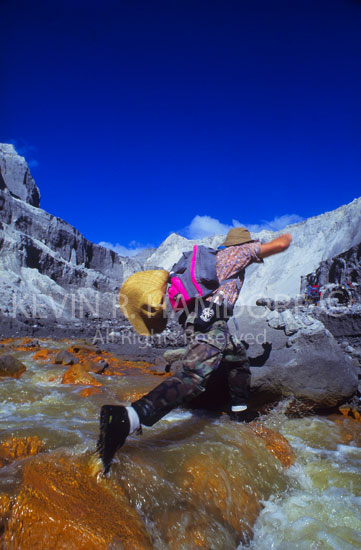
Crossing iron stained stream. Pungent sulphuric gas was a frequently detectable in the air.
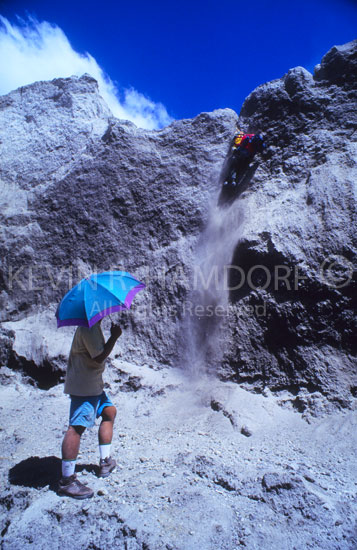
Massive deposits of volcanic ash constantly challenged the advance to the summit.
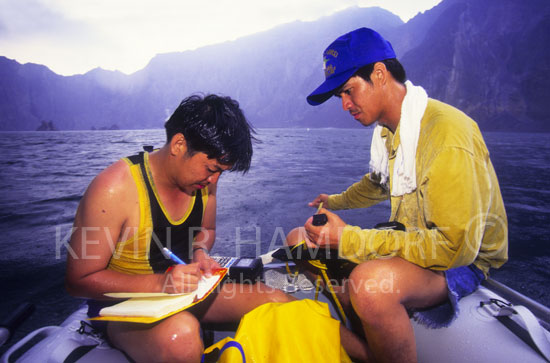
Philvolcs (Philippine Institute of Volcanology and Seismology) geologist monitor Mount Pinatubo Crater Lake water (In 1994 - pH 3, temperature 40 degree C).The rain so cold that we rowed over to the protruding magma dome island (in background) to warm ourselves from it’s radianting heat!
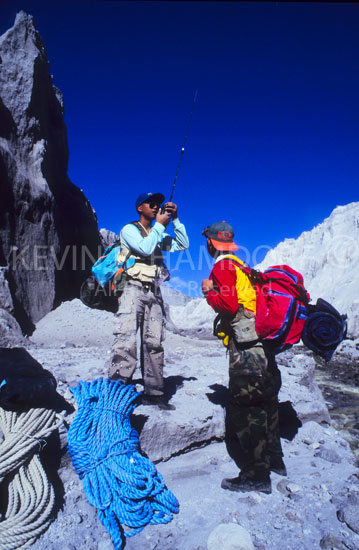
The expedition maintained radio contact with the support base at Clark Air Field - on one occasion calling for the helicopter evacuation of an injured climber.
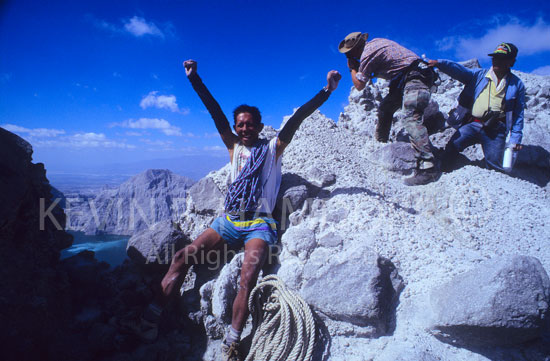
After two days of tortuous trekking over scorching sterile ground and breathing sulphur tainted air, the eastern summit on the crater rim of Mt. Pinatubo was reached.
Carefully observing the behavior of the members of the expedition was also important. I like to "ambush" people. I keep an eye on them, quietly observe how they interact, then look for a shot of someone who's near the limit but keeps pushing on. Through the first days, people stiffen up when they know you're taking their picture. But after a while they concentrate on their own little difficulties and become less self-conscious. You can photograph them more easily.
Peering 250 meters down into Mt. Pinatubo’s huge crater from the eastern (Pampanga side) rim. Maraunot Notch, the lowest point, is visible on the opposite (Zambales) side. The light discoloration visible on the surface of the lake is due to gaseous emissions originating from the vent below the crater floor.
The 1991 eruption vented so much magma and rock from below the volcano that the summit collapsed and form a 2.5 km diameter depression (caldera), lowering the original summit elevation by 260 meters.
Q: What's next?
A: I want to keep on documenting what's happening around Pinatubo. The lahar that's flowing off the mountain is a still a big problem for the local communities. As you read this article, it's in the process of destroying villages and farmland. There's a great story in that, and it really needs someone to tell it.
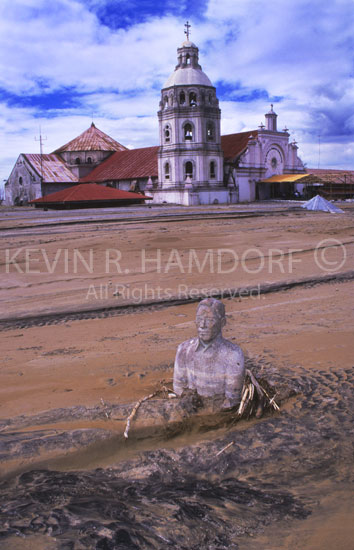
Statue of National Hero, Jose Rizal, maintains a valiant, but ultimately hopeless guard over 350 year old Bacolor Church, Pampanga. The unrelenting lahar being destined to entomb all but the upper dome of God’s sanctuary.
The June 1991 eruption of Mt. Pinatubo Volcano displaced some 200,000 persons Approximately 20,000 of these refugees were permanently displaced indigenous Aeta, who had made the surrounding slopes of Mt. Pinatubo their traditional home. Accurate forecasts of Pinatubo’s volcanic activity by Philvolcs and the U.S. Geological Survey succeeded in the timely evacuation of the vast majority of nearby residents. Nevertheless, some 800 people perished as a direct result of the cataclysmic eruption.
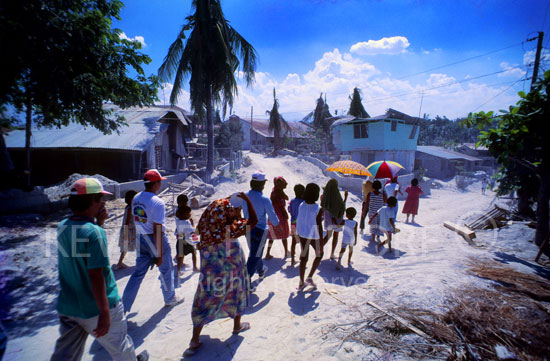
Refugees from Pinatuno’s eruption, residents of Porac, Pampanga, trudge past their ash smothered homes.
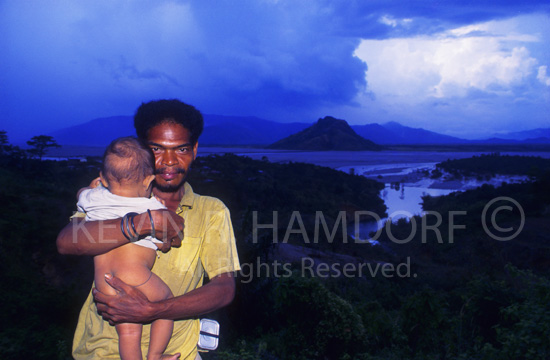
Forced from his traditional home on the western flanks of Mt. Pinatubo, an Aeta tribeman and his child stand before the lahar choked San Tomas River, Zambales.
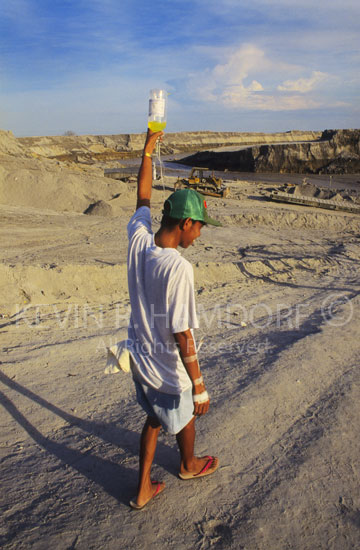
Intraveinous bottle connected, one of ten’s of thousands of Pinatubo’s victims makes his way towards an uncertain future. Porac, Pampanga.
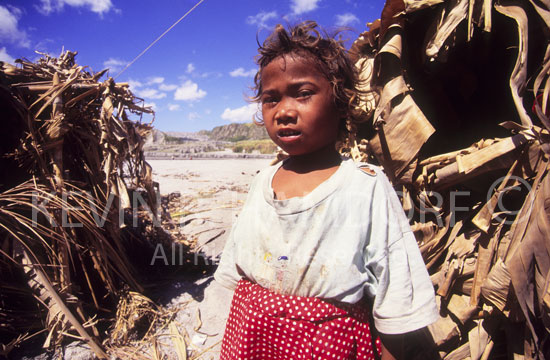
A young Aeta girl, born on the western flank of Mt. Pinatubo, stands before a palm leaf shelter, now her home on the Botolan River, Zambales.
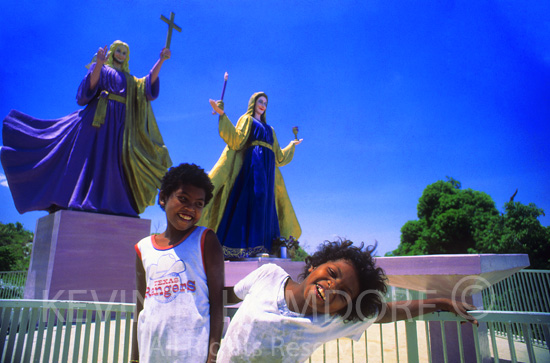
Aeta children beneath the protective gaze of “The Shrine to Victims of Mt. Pinatubo”. San Marcelino, Zambales
The Pinatubo trip was a fantastic event in my life. I don't know whether I found what I was looking for, but so many things have happened to me simply as a consequence of that explosion. Of course, I can't say that it was a good event, but from a photographer's point of view it was a godsend.
I'd also like to go back to Australia and take more photographs there. It's an amazing continent. But in the end I guess I'll just keep on walking over the next hill or looking around the next corner.

Stoney Dessert, Outback South Australia.
Wherever you go, it's always worth the effort, and there are always photographs. But the important thing is that you have to make that effort, go that extra mile.
















































